Following the cancellation of two more Apollo missions in early September 1970 in addition to Apollo 20 in January 1970, plans for the remainder of the Moon landing program as well as the follow-on Skylab space station began to settle down. NASA Administrator Thomas O. Paine announced on Sept. 2 that budgetary constraints compelled him to cancel Apollo missions 15 and 19, and designated the remaining flights as Apollo 14 through 17. The missions would fly at roughly six-month intervals beginning with Apollo 14 in January 1971, to be followed by launch of the experimental space station Skylab in November 1972 and three crews to occupy the orbital laboratory for extended periods.
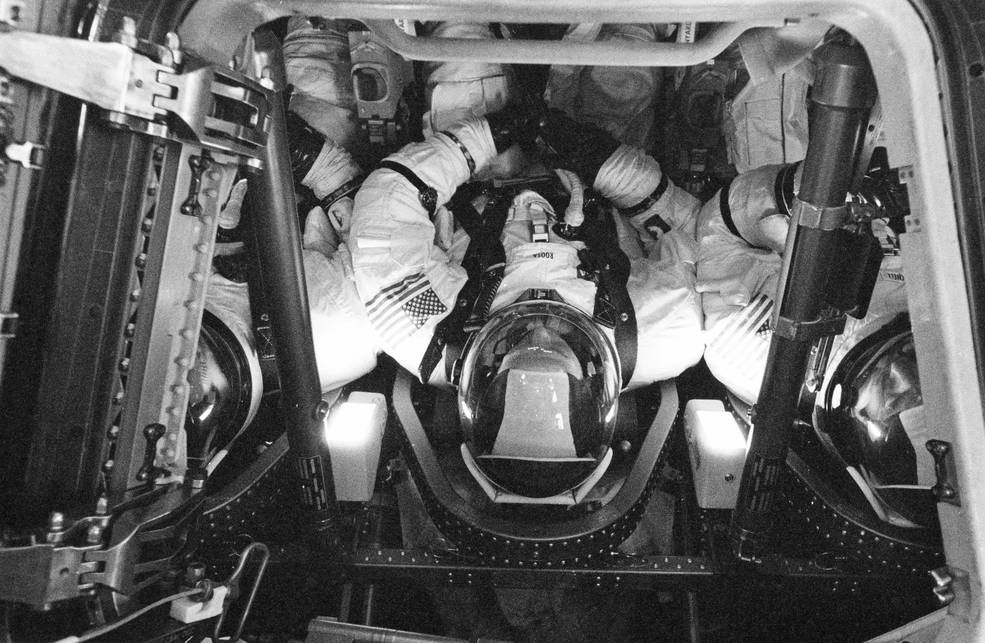
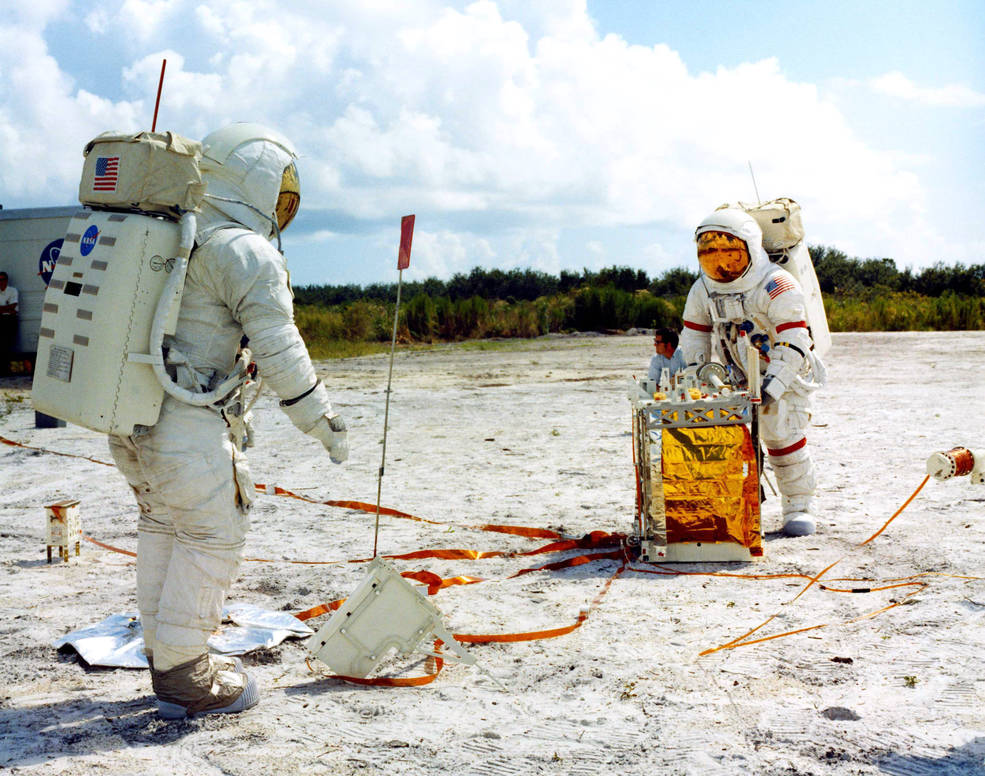
Left: Apollo 14 crew of Shepard, left, Roosa, and Mitchell during a CM altitude chamber test. Right: Apollo 14 backup crewmembers Engle, left, and Cernan practice deploying experiments.
The Apollo 14 prime crew of Commander Alan B. Shepard, Command Module Pilot (CMP) Stuart A. Roosa, and Lunar Module Pilot (LMP) Edgar D. Mitchell as well as their backups Eugene A. Cernan, Ronald E. Evans, and Joe H. Engle, continued preparing for their upcoming mission to explore the Fra Mauro region of the Moon’s highlands, the planned landing site for Apollo 13. While workers at the Kennedy Space Center (KSC) continued to implement modifications to the Apollo 14 Service Module as recommended by the Apollo 13 Review Board, such as the addition of a battery and an extra oxygen tank, the prime crew completed an altitude chamber test of their spacecraft on Sept. 1, followed by the backup crew two days later. Shepard and Mitchell completed a recertification altitude test of the Lunar Module on Sept. 18. The two as well as their backups Cernan and Engle practiced for the two excursions on the lunar surface, including the addition of an Active Seismic Experiment that, following their departure, would deploy grenades to varying distances to gain a better understanding of the Moon’s surface and sub-surface structure. On Sept. 30, Dr. Charles A. Berry, Director of Medical Research and Operations at the Manned Spacecraft Center (MSC), now the Johnson Space Center in Houston, announced a 21-day preflight Flight Crew Health Stabilization Program for the Apollo 14 astronauts. The goal of the program was to prevent issues such as occurred prior to Apollo 13 when exposure of a backup crewmember to German measles shortly before flight resulted in a last minute crew replacement.
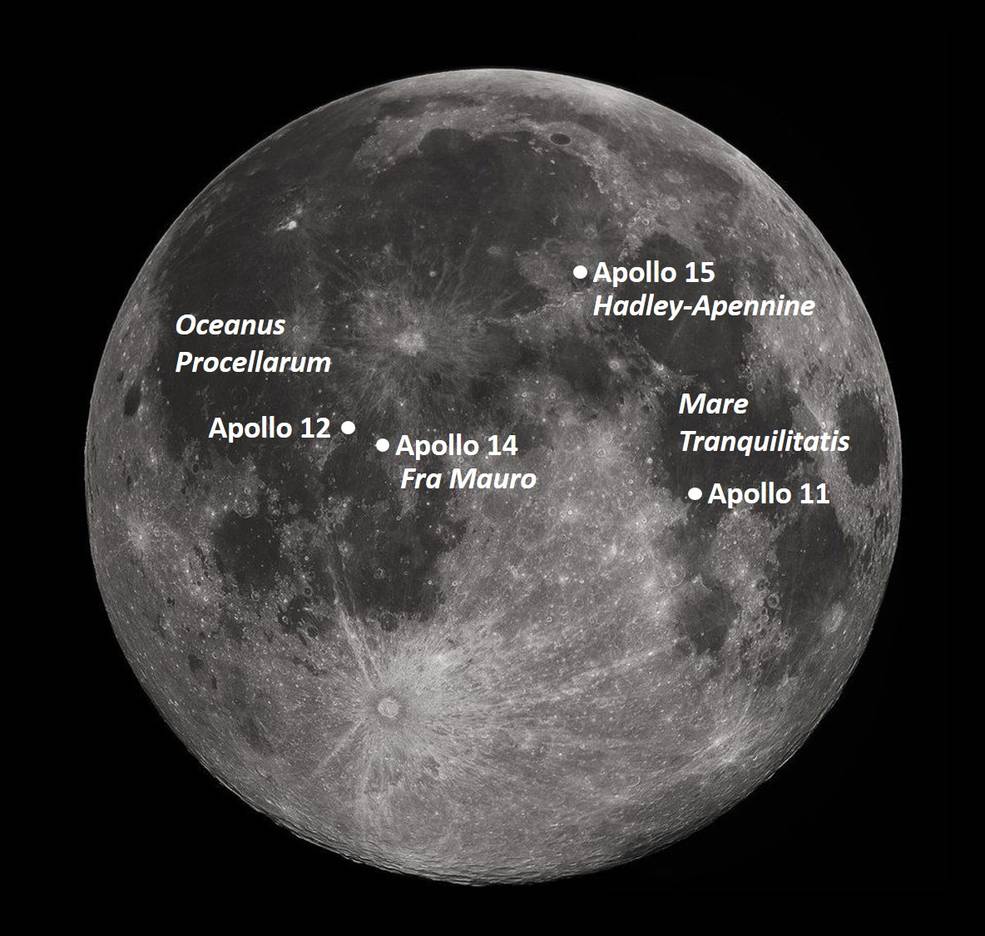
Apollo landing sites, including the newly designated Apollo 15 site at Hadley-Apennine.
On Sept. 24, NASA announced the landing site for Apollo 15, the Hadley-Apennine region on the southeast edge of the Mare Imbrium (Sea of Rains). At 25 degrees north, it was the first landing away from the lunar equator. The landing zone was located between the 8,000-foot high Apennine Mountains and the Hadley Rille, a 60-mile long, half-a-mile wide and 600-foot deep sinuous canyon. With an ambitious landing site decided, the Apollo 15 crew of Commander David R. Scott, CMP Alfred M. Worden and LMP James B. Irwin and their backups Richard F. Gordon, Vance D. Brand and Harrison H. “Jack” Schmitt, began training for the July 1971 mission in earnest. With the deletions of two flights, Apollo 15 would now be the first to utilize the Lunar Roving Vehicle (LRV) to enable the astronauts to travel farther from their LM to explore areas of geologic interest. Scott, Worden, and Irwin attended the Trainer Readiness Review for the LRV at MSC on Sept. 15. While workers in KSC’s Vehicle Assembly Building (VAB) continued to test the assembled Apollo 14 Saturn V rocket in High Bay 3, stacking of the Apollo 15 rocket continued in High Bay 1. The first stage of the Apollo 15 had arrived in July 1970 and workers mounted it on its Mobile Launcher. Workers stacked the second stage on Sept. 15 and the third stage the following day.
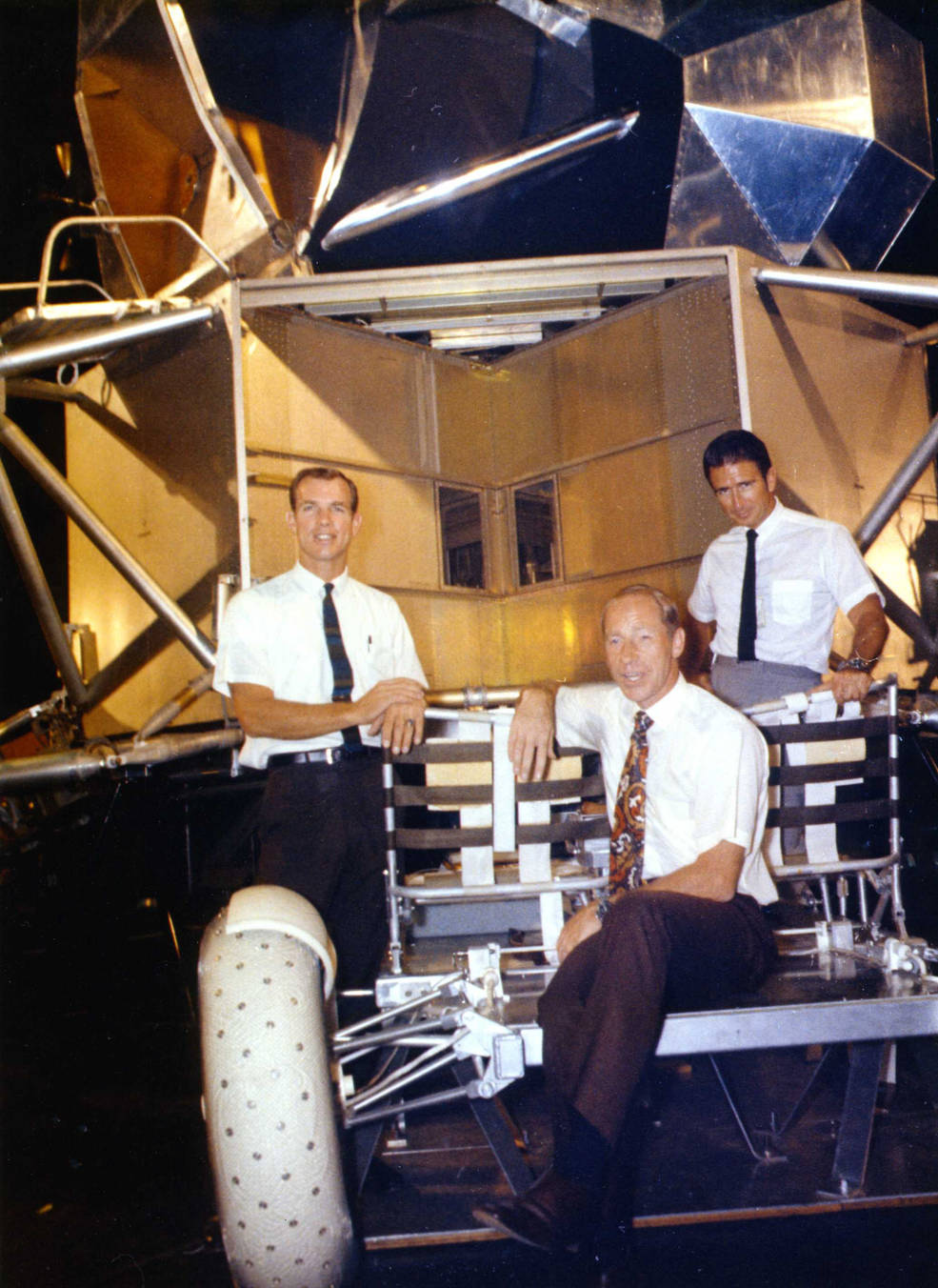
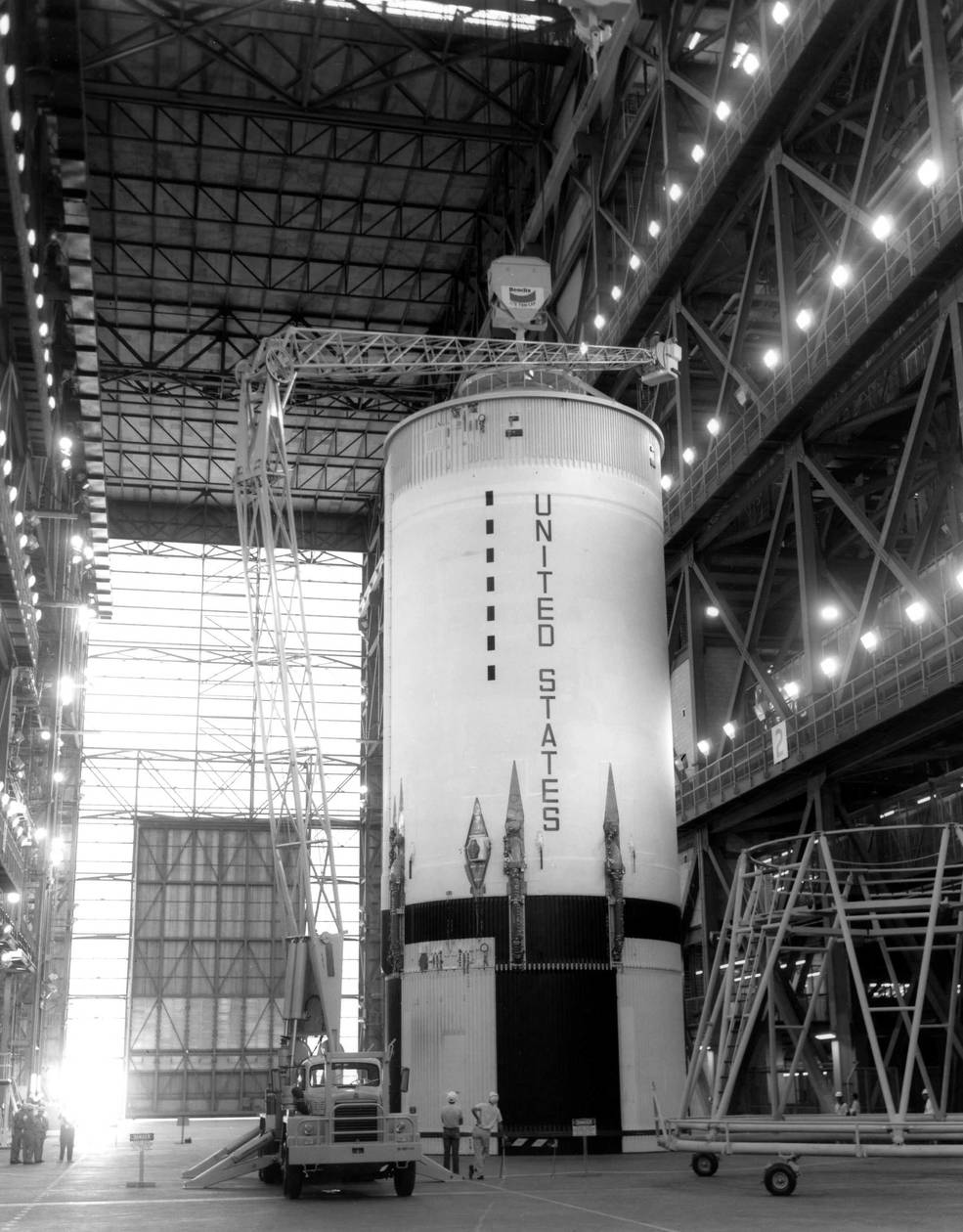
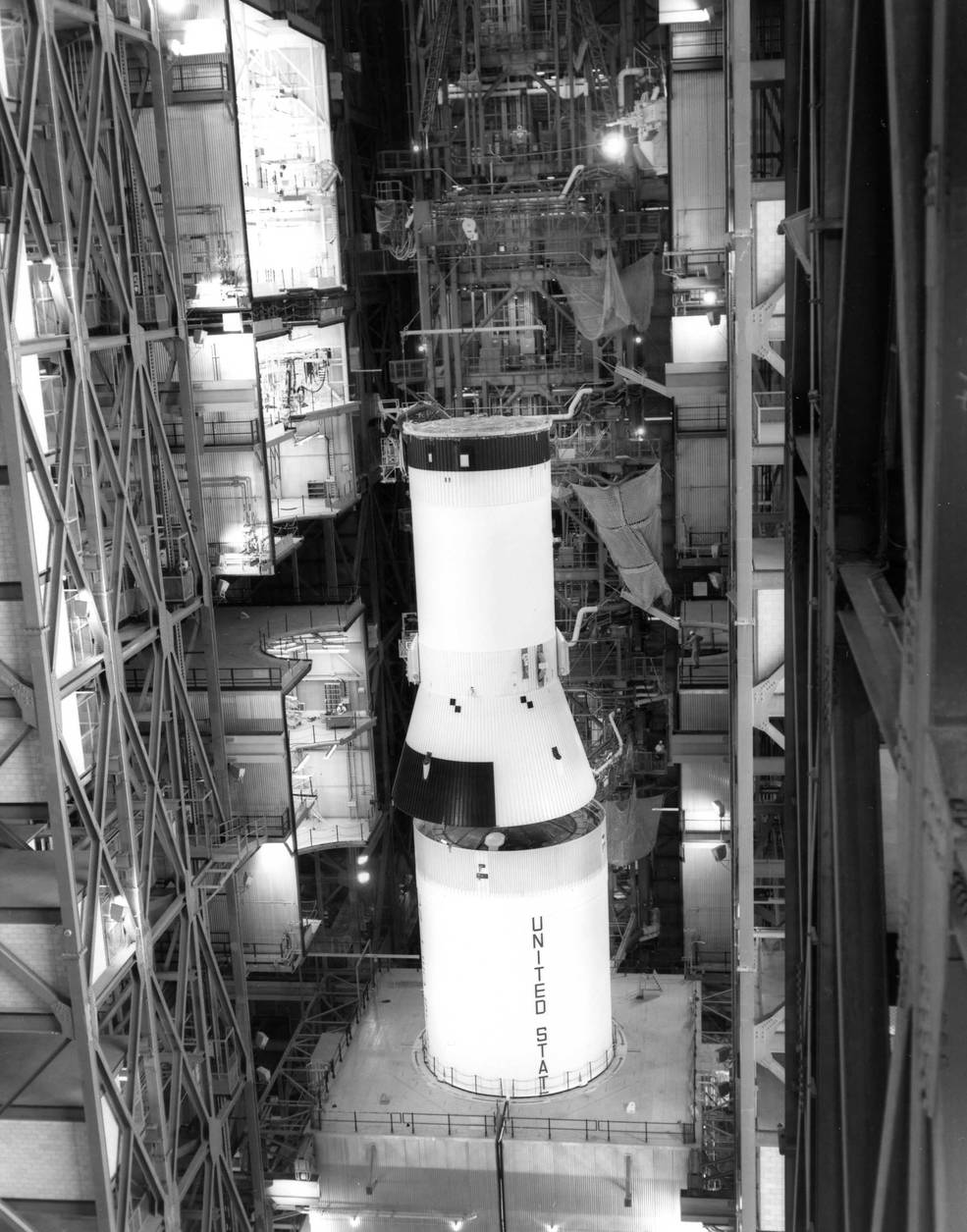
Left: Apollo 15 crew of Scott, left, Worden, and Irwin pose on the training unit of the Lunar Roving Vehicle during the trainer readiness review at MSC. Middle: Workers at KSC prepare to stack the second stage of the Apollo 15 Saturn V rocket. Right: Workers stack the third stage of the Apollo 15 Saturn V.
While NASA had not yet officially announced the crew for Apollo 16, then planned for a January 1972 launch, John W. Young, Thomas K. Mattingly, and Charles M. Duke had already begun training. The unofficial backup crew for Apollo 16, who would have been the leading candidates as the prime crew for the now-cancelled Apollo 19, Fred W. Haise, Gerald P. Carr, and William R. Pogue, were reassigned. Haise stayed on as backup commander while Carr and Pogue were assigned along with scientist-astronaut Edward G. Gibson to the third Skylab crew. When the Apollo 16 crews were officially announced in April 1971, Apollo 14 veterans Stuart A. Roosa and Edgar D. Mitchell joined Haise on the backup crew. While managers had not yet formally decided on the landing site for Apollo 16, some geologists favored the Descartes region, an ancient volcanic terrain in the central lunar highlands.
To be continued…
John Uri
NASA Johnson Space Center




























